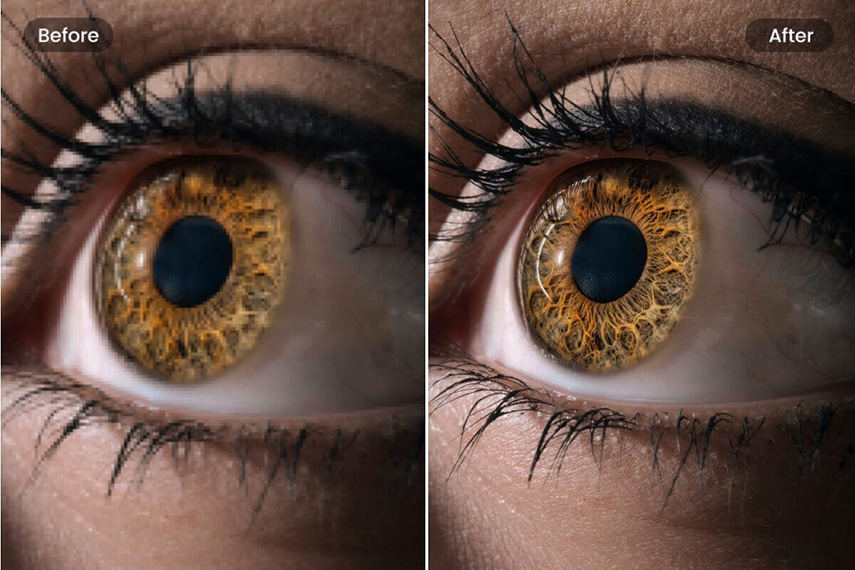Ai Upscale Image

In the digital age, the quest for visual fidelity has been a relentless pursuit. From the grainy photographs of yesteryears to the high-definition images of today, technological advancements have continuously propelled us toward sharper, clearer, and more immersive visual experiences. One of the most recent and remarkable innovations in this realm is AI image upscaling—a process that holds the potential to revolutionize the way we perceive and interact with visual content.
AI upscaling, also known as super-resolution, is a technique that employs artificial intelligence algorithms to enhance the resolution and quality of images. Unlike traditional methods that rely solely on interpolation techniques to enlarge images, AI upscaling algorithms leverage deep learning models to infer and generate high-resolution details that are not present in the original image. This process involves training neural networks on vast datasets of high and low-resolution image pairs, enabling them to learn complex patterns and textures and effectively upscale images while preserving crucial details and minimizing artifacts.
The Renaissance of Visual Fidelity
One of the primary applications of AI upscaling is in the restoration and enhancement of old or low-resolution images and videos. Historical photographs, classic films, and archival footage that were once marred by pixelation, blurriness, and noise can now be revitalized and brought back to life with astonishing clarity and fidelity. By analyzing patterns and textures in the images, AI algorithms can intelligently fill in missing information and recreate finer details, resulting in visually stunning renditions that closely resemble their high-resolution counterparts.
Furthermore, AI upscaling is not limited to static images but extends to video content as well. With the rise of streaming platforms and the demand for high-quality video experiences, there is a growing need to upscale lower resolution videos to meet modern standards. AI-powered video upscaling techniques can enhance the resolution, sharpness, and overall visual quality of videos, making them more appealing to viewers and providing a more immersive viewing experience.
Moreover, AI upscaling has significant implications for various industries, including entertainment, gaming, art, and design. In the entertainment industry, for instance, studios can use AI upscaling to remaster classic films and TV shows for re-release in higher resolutions, preserving their cultural significance for future generations. Similarly, in the gaming industry, AI upscaling can enhance the graphics of older video games, breathing new life into beloved classics and making them compatible with modern display technologies.
Exploring the Realm
In the realm of art and design, AI upscaling opens up a world of creative possibilities. Artists and designers can use AI algorithms to enhance the resolution and fidelity of their digital artworks, enabling them to produce visually striking pieces with intricate details and textures. Additionally, AI upscaling can be integrated into image editing software, allowing photographers and graphic designers to enhance the resolution of their photos and designs with just a few clicks.
However, despite its remarkable capabilities, AI upscaling is not without its challenges and limitations. One of the primary concerns is the potential for overfitting, where the AI algorithm memorizes the training data rather than learning generalizable patterns. This can lead to unrealistic results and artifacts in the upscaled images, undermining the credibility of the process. Additionally, AI upscaling algorithms may struggle with certain types of images, such as those containing complex textures or patterns, resulting in suboptimal results.
Conclusion
Furthermore, there are ethical considerations surrounding the use of AI upscaling, particularly when it comes to historical or sensitive content. The process of upscaling images or videos, especially those depicting real people or events, raises questions about authenticity, consent, and privacy. There is a risk of misrepresenting historical facts or altering the context of the original content, which could have unintended consequences.
Despite these challenges, the potential benefits of AI upscaling are undeniable. As technology continues to advance and AI algorithms become more sophisticated, we can expect further improvements in the quality and fidelity of upscaled images and videos. From preserving our cultural heritage to enhancing our visual experiences, AI upscaling holds the promise of transforming the way we perceive and interact with visual content in the digital age.





